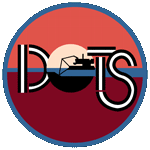

| Field Name | Description |
|---|---|
| % Effect | The magnitude of the effect (e.g., % mortality; change in weight; change in length; percent hatch; etc.). |
| Analyte | The chemical substance used to create the exposure. |
| CAS | CAS registry number is a unique numerical identifier assigned by Chemical Abstract Service (CAS) to a chemical substance. |
| COLL | Where the animal was obtained: C (cultured-reared in laboratory); W (collected from wild); N/I (No Information); N/R (Not Reported). |
| Comments | Commonly supports the effects data. |
| Common name | Common name of the test animal. |
| Control | The control response for the observed effect (e.g., survival, growth, reproduction; etc.). |
| Dose | The frequency with which the contaminant was applied during the test. |
| Duration | The duration of the exposure period: hr (hours); d (days) wk (weeks), mo (months), yr (years). |
| Effect | The type of toxicological effect observed in the test animal (e.g., survival, growth, reproduction). |
| ERED ID | Unique identification number autogenerated by database. |
| ExpConc | The exposure concentration and units. |
| Fraction | The test animal tissue used to determine tissue residue (e.g., whole body, soft tissue, liver, etc.). |
| Genus Species | Scientific name of the test animal. |
| Media | Type of water used to test animal: FW (freshwater); SW (saltwater) |
| Mix | Whether the analyte was tested as part of a mixture of analytes or individually: yes (part of mixture), no (single), or N/I (No information). |
| Risk | Summary of the risk (e.g., ED, NOED, LOED) an analyte might pose to the test animal. Previously, many risk numbers were assigned to results. Going forward ERED will not report a risk number unless it is reported in the study. |
| Route | The route by which the analyte was intended to enter the body: aquatic; diet; injection. |
| Signif | Whether the effect was significantly different, usually compared to the control for laboratory studies: Yes (significant); No (not significant). |
| Source | Reference from which data was obtained. |
| Spiked | Whether the analyte was spiked into the route (aquatic, diet, sediment, injection): yes (analyte spiked), no (analyte not spiked) |
| ST | Study type: L (Lab); F (Field); L/F (Lab/Field); Meso (Mesocosm); Micro (Microcosm); N/I (No Information). |
| Stage | Life stage of the test animal (e.g., egg, larval, juvenile, adult). |
| Tissue ww (mg/kg) | Tissue residue of analyte in the test animal tissue (mg/kg wet weight). |
| Trend | The trend of the effect, usually compared to the control for laboratory studies: INC (increase); DEC (decrease), NEF (No effect). |
Source: Mathers et al. 1985. The growth and feeding behaviour respons.... Aquat Toxicol 6:157-164..
| Genus Species | ERED ID | ST | Common | Stage | COLL | Analyte | CAS | MX | SPK | H2O | Route | CONC | Dose | DUR | Residue mg/kg ww |
Fraction | Effect | Trend | Signif | % Effect | Control | Risk | Comments | Source |
|---|---|---|---|---|---|---|---|---|---|---|---|---|---|---|---|---|---|---|---|---|---|---|---|---|
| Micropterus salmoides | 20493 | L | largemouth bass | juvenile | W | Pentachlorobenzene | 608-93-5 | N | Y | FW | aqueous | 50.4 µg/L | continuous | 7 d | 10.8 | whole body | growth | DEC | Y | 37 mg/g/day | 75 mg/g/day | N/R | aqueous expos. w/high feeding rate | Mathers et al. 1985. The growth and feeding behaviour respons.... Aquat Toxicol 6:157-164. |
| Micropterus salmoides | 20494 | L | largemouth bass | juvenile | W | Pentachlorobenzene | 608-93-5 | N | Y | FW | aqueous | 50.4 µg/L | continuous | 7 d | 9.6 | whole body | growth | NEF | N | 15 mg/g/day | 17 mg/g/day | N/R | aqueous expos. w/low feeding rate | Mathers et al. 1985. The growth and feeding behaviour respons.... Aquat Toxicol 6:157-164. |
| Micropterus salmoides | 20495 | L | largemouth bass | juvenile | W | Pentachlorobenzene | 608-93-5 | N | Y | FW | aqueous | 50.4 µg/L | continuous | 7 d | 10.8 | whole body | survival | NEF | N/R | 92% | 100% | N/R | aqueous expos. w/high feeding rate | Mathers et al. 1985. The growth and feeding behaviour respons.... Aquat Toxicol 6:157-164. |
| Micropterus salmoides | 20496 | L | largemouth bass | juvenile | W | Pentachlorobenzene | 608-93-5 | N | Y | FW | aqueous | 50.4 µg/L | continuous | 7 d | 9.6 | whole body | survival | NEF | N/R | 100% | 100% | N/R | aqueous expos. w/low feeding rate | Mathers et al. 1985. The growth and feeding behaviour respons.... Aquat Toxicol 6:157-164. |
| Micropterus salmoides | 20497 | L | largemouth bass | juvenile | W | Pentachlorobenzene | 608-93-5 | N | Y | FW | aqueous | 50.4 µg/L | continuous | 7 d | 10.8 | whole body | indice of condition | DEC | Y | 1.04 | 1.21 | N/R | aqueous expos. w/high feeding rate | Mathers et al. 1985. The growth and feeding behaviour respons.... Aquat Toxicol 6:157-164. |
| Micropterus salmoides | 20498 | L | largemouth bass | juvenile | W | Pentachlorobenzene | 608-93-5 | N | Y | FW | aqueous | 50.4 µg/L | continuous | 7 d | 9.6 | whole body | indice of condition | NEF | N | 0.98 | 0.99 | N/R | aqueous expos. w/low feeding rate | Mathers et al. 1985. The growth and feeding behaviour respons.... Aquat Toxicol 6:157-164. |